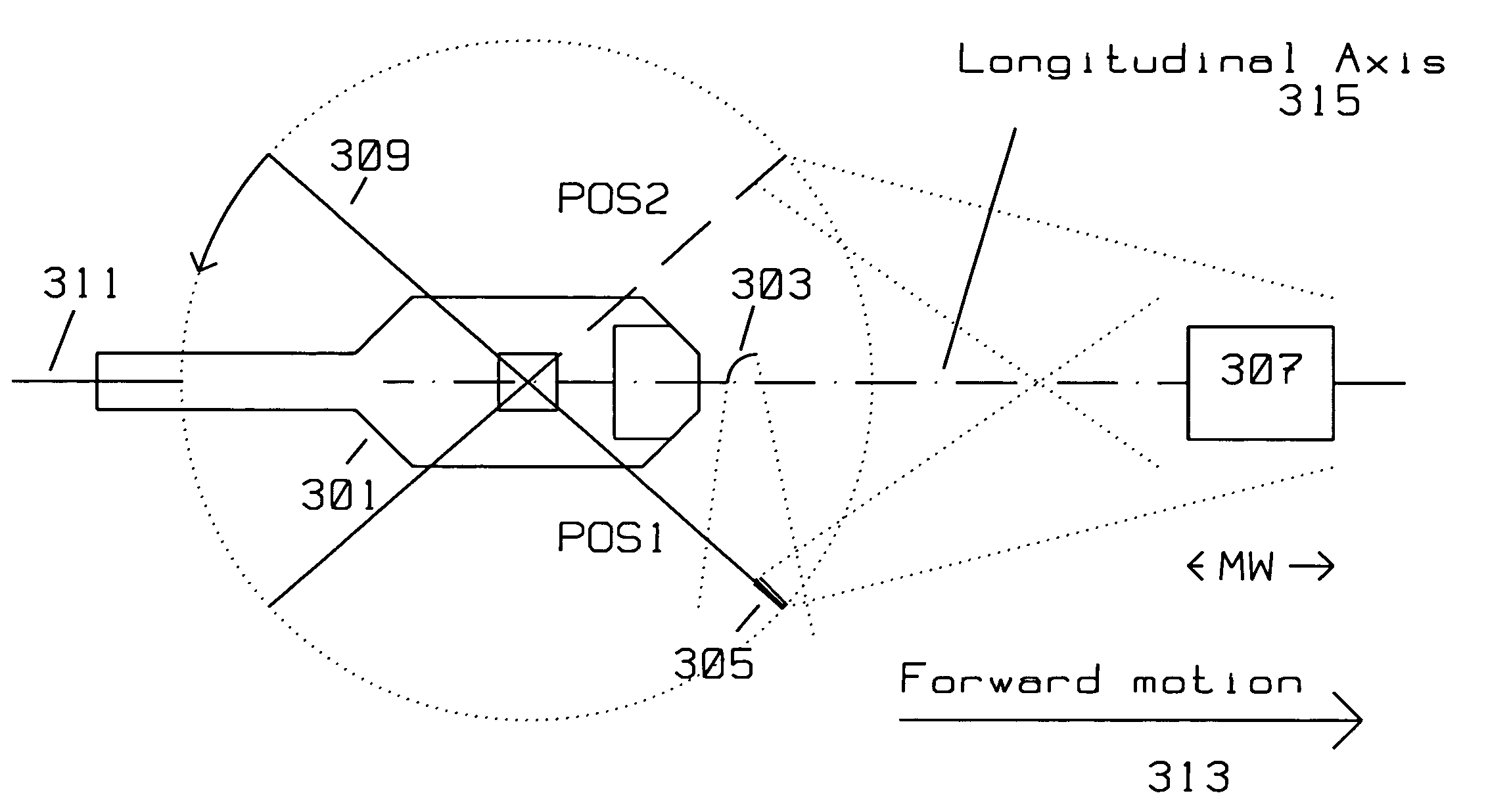Wide area high resolution SAR from a moving and hovering helicopter
a high-resolution, wide-area technology, applied in the direction of instruments, using reradiation, transportation and packaging, etc., can solve the problems of reducing the utility of pulses, inaccurate summing of radar returns over arrays, and inability to fully compensate for phas
- Summary
- Abstract
- Description
- Claims
- Application Information
AI Technical Summary
Benefits of technology
Problems solved by technology
Method used
Image
Examples
Embodiment Construction
[0022]This disclosure introduces the concept of using a moving blade reflector rotatingly attached to a stationary platform to generate a forward looking SAR image. The radar return motion compensation is derived from the direct reflections off the moving, blade reflector itself, simplifying motion compensation computations. Typically, the moving blade reflector is attached to the main lift rotor blade(s) of a helicopter.
[0023]FIG. 1 shows the typical prior art geometric relationship between a moving platform carrying a radar transmitter / receiver using Synthetic Aperture (SAR) search methods imaging target 101 by said radar transmitter / receiver in a swath mode. The moving platform is initially at position 103, travels with velocity V in the direction shown to position 105. In SAR search (or swath) mode, the SAR antenna azimuth is fixed at azimuth angle θ oriented towards target 101 as the platform moves with velocity V. The moving platform moves from position 103 to position 105, wh...
PUM
 Login to View More
Login to View More Abstract
Description
Claims
Application Information
 Login to View More
Login to View More - R&D
- Intellectual Property
- Life Sciences
- Materials
- Tech Scout
- Unparalleled Data Quality
- Higher Quality Content
- 60% Fewer Hallucinations
Browse by: Latest US Patents, China's latest patents, Technical Efficacy Thesaurus, Application Domain, Technology Topic, Popular Technical Reports.
© 2025 PatSnap. All rights reserved.Legal|Privacy policy|Modern Slavery Act Transparency Statement|Sitemap|About US| Contact US: help@patsnap.com



